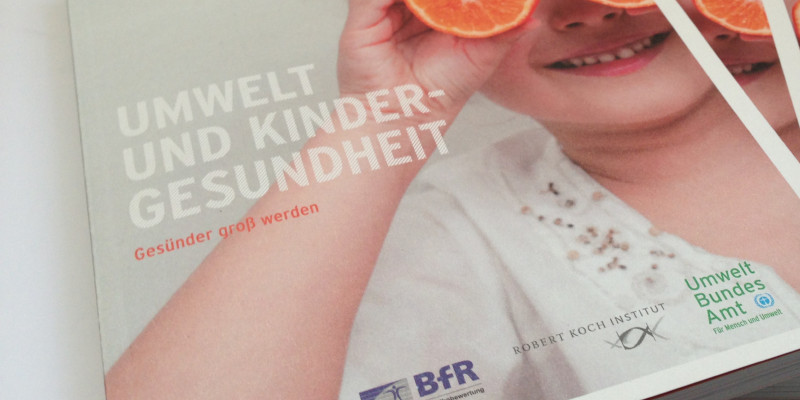Children and adolescents frequently spend more than 90 per cent of their time indoors. The new parents' guide focuses on the quality of life indoors for children, including at school. Depending on age and type of school, children spend up to eight hours in schoolrooms (even longer if they attend an after-school care centre). These rooms have notoriously excessive levels of carbon dioxide and particulate matter. Building products or new furniture can emit unwanted chemicals, after refurbishment in particular. The problem in older school buildings or buildings with faulty construction can be mould formation. Poor air quality can make children tired and cause headache, which then has an impact on their ability to concentrate and, of course, on their learning achievement. It is therefore very important to ventilate rooms intensively and at regular intervals – not only during breaks but also during instruction. Airing rooms during breaks only is not adequate, especially in the summer, because the circulation of air between outdoors and indoors is slower when temperature differences are minimal. Healthy breathing air is at the least just as important for learning achievement as good nutrition and sufficient sleep. Children's rooms or nurseries must also be aired regularly. UBA advises against the use of any type of perfume spray or other air fresheners as these products introduce more chemicals to indoor air and merely mask poor air quality.
The parents' guide also points out that children behave differently than adults. They often crawl and play on the ground, potentially exposing themselves to larger quantities of chemicals than adults. The likelihood of ingesting chemicals can be further increased by the hand-to-mouth contact or sucking on objects which is typical of children's behaviour. Parents are reminded to take this into account when purchasing children's items. New toys should be checked for their condition: they should be avoided if they smell unpleasant or if fragrance has been added. The GS Seal for Tested Safety and the Blue Angel for environmentally friendly and low-emissions products provide good orientation when purchasing children's items. The authors of the guide discuss the important criteria to keep in mind when buying changing tables, baby tubs or children's high chairs. There is also advice on how to move house with small children.
Precautions can also be taken with baby monitors, wireless routers and mobile phones which all use radio waves, or electromagnetic fields, for data communication. There are limits on exposure levels but children may react more sensitively than adults, and they will be making use of these technologies for a lifetime. The Federal Office for Radiation Protection (BfS) therefore recommends reducing exposure to the lowest possible levels. Experts at the BfS explain in the new guide how to handle this issue without forgoing the benefits of the mobile phone or baby monitor. Features in baby monitors can vary quite a bit. The radiation from products with the Blue Angel ecolabel is lower than in other devices. One important factor is that distance to the device reduces exposure; therefore, the baby monitor should be kept as far away from the child's bed as possible. Furthermore, battery-operated models are not only more practical, they emit less radiation than those with a power adapter.
Mobile phones should be banned from the children's room in general. They are strictly not a suitable toy for infants and toddlers, for the greatest source of everyday exposure is usually the mobile phone when it is on – and it affects adults, too. Children should only make calls with a mobile phone when necessary as it is better to use the well-known fixed phone with a cord. Cordless phones are less harmful than mobile telephones. One should make sure to purchase mobile and cordless phones that are low in radiation. WLAN access points, wireless routers and the base stations of cordless telephones are ideally placed in the corridor or in a room where one spends little time. Bedrooms and nurseries are not the appropriate place for these devices. WLAN routers can be switched off when not in use, which is recommended at nighttime.
 Click to enlarge
Click to enlarge
